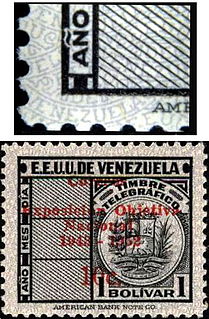
The kwacha is the currency of Zambia. It is subdivided into 100 ngwee.

The Australian dollar is the legal tender of Australia, and the currency of three independent Pacific Island states, specifically Kiribati, Nauru, and Tuvalu. It was introduced on 14 February 1966 when the pre-decimal Australian pound, with subunits of shillings and pence, was replaced by the new decimal currency, the Australian dollar.

The United States five-dollar bill ($5) is a denomination of United States currency. The current $5 bill features the 16th U.S. President (1861-65), Abraham Lincoln's portrait on the front and the Lincoln Memorial on the back. All $5 bills issued today are Federal Reserve Notes.

The United States ten-dollar bill ($10) is a denomination of U.S. currency. The obverse of the bill features the portrait of Alexander Hamilton, who served as the first U.S. Secretary of the Treasury. The reverse features the U.S. Treasury Building. All $10 bills issued today are Federal Reserve Notes.

The United States fifty-dollar bill ($50) is a denomination of United States currency. The 18th U.S. President (1869-77), Ulysses S. Grant, is featured on the obverse, while the U.S. Capitol is featured on the reverse. All current-issue $50 bills are Federal Reserve Notes.

The United States one-dollar bill ($1) since 1876 has been the lowest value denomination of United States currency. An image of the first U.S. President (1789–1797), George Washington, based on the Athenaeum Portrait, a painting by Gilbert Stuart, is currently featured on the obverse, and the Great Seal of the United States is featured on the reverse. The one-dollar bill has the oldest overall design of all U.S. currency currently being produced. The obverse design of the dollar bill seen today debuted in 1963 when it was first issued as a Federal Reserve Note.

The Fijian dollar has been the currency of Fiji since 1969 and was also the currency between 1867 and 1873. It is normally abbreviated with the dollar sign $, or alternatively FJ$ to distinguish it from other dollar-denominated currencies. It is divided into 100 cents.
The Jamaican dollar has been the currency of Jamaica since 1969. It is often abbreviated to J$, the J serving to distinguish it from other dollar-denominated currencies. It is divided into 100 cents.
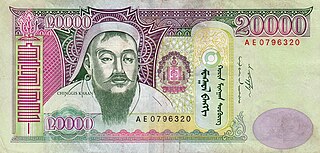
The tögrög or tugrik is the official currency of Mongolia. It was historically subdivided into 100 möngö (мөнгө). Currently, the lowest denomination in regular use is the 10-tögrög note and the highest is the 20,000-tögrög note. In unicode, the currency sign is U+20AE₮TUGRIK SIGN.

The dollar has been the currency of Barbados since 1935. The present dollar has the ISO 4217 code BBD and is normally abbreviated with the dollar sign "$" or, alternatively, "Bds$" to distinguish it from other dollar-denominated currencies. It is divided into 100 cents.
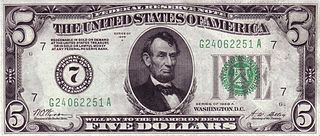
The Series of 1928 was the first issue of small-size currency printed and released by the U.S. government. These notes, first released to the public on July 10, 1929, were the first standardized notes in terms of design and characteristics, featuring similar portraits and other facets. These notes were also the first to measure 6.14" by 2.61", quite a bit smaller than the large-sized predecessors of Series 1923 and earlier that measured 7.421 8" by 3.125"
The pound was the currency of New Zealand from 1840 until 1967, when it was replaced by the New Zealand dollar.

The Hyderabadi Rupee was the currency of the Hyderabad State from 1918 to 1959. It coexisted with the Indian rupee from 1950. Like the Indian rupee, it was divided into 16 annas, each of 12 pai. Coins were issued in copper for denominations of 1 and 2 pai and ½ anna, in cupro-nickel for 1 anna and in silver for 2, 4 and 8 annas and 1 rupee.

Canada has an extensive history with regard to its currencies. Prior to European contact, indigenous peoples in Canada used items such as wampum and furs for trading purposes, which continued when trade with Europeans began.
The dollar was the currency of New Brunswick between 1860 and 1867. It replaced the pound at a rate of 4 dollars = 1 pound and was equal to the Canadian dollar. The New Brunswick dollar was replaced by the Canadian dollar at par when New Brunswick entered the Canadian Confederation.
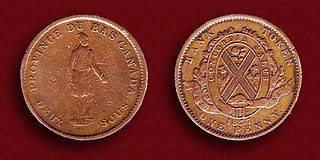
The pound was the unit of account for currency of the Canadas until 1858. It was subdivided into 20 shillings (s), each of 12 pence (d). In Lower Canada, the sou was used, worth 1⁄2 penny. Although the pounds, shillings, and pence accounting system had its origins in the British pound sterling, the Canadian pound was never formally linked to the British currency.
Banknotes were prepared for, but not generally issued by the Bank of Nassau between the 1870s and 1906. The notes are actually quite rare remainder banknotes.
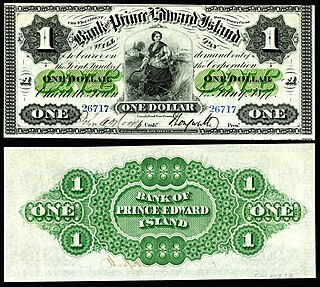
The Prince Edward Island dollar was a unit of currency used in Prince Edward Island. The dollar replaced the Prince Edward Island pound in 1872 at a rate of 1 pound = 4.866 dollars. The dollar was subdivided into 100 cents.

The United States dollar is the official currency of the United States and its territories per the United States Constitution since 1792. In practice, the dollar is divided into 100 smaller cent (¢) units, but is occasionally divided into 1000 mills (₥) for accounting. The circulating paper money consists of Federal Reserve Notes that are denominated in United States dollars.
This article concerns the banknotes of the New Zealand dollar


